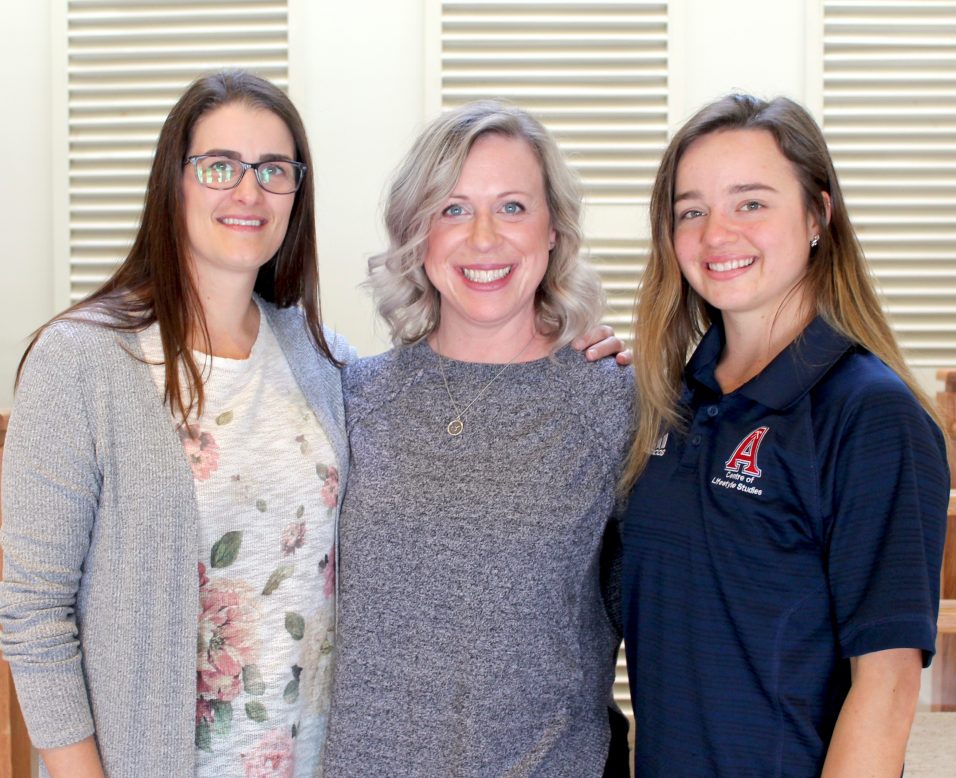Wolfville Collaborative Family Practice Leads the Way with Team-Based Health Care Model
By Emily Leeson
The newly-established Wolfville Collaborative Family Practice is offering patients a new model of primary care delivery with a focus on team- based, patient-centred care.“This model allows us to start thinking bigger, broader, and more patient-first,†says Dr. Alison Wellwood. “We can do really innovative things that are meaningful for our patients and they can now access a broader range of health care services right in our building at the Wolfville Professional Centre [WPC].â€
Located across from the Eastern Kings Memorial Community Health Centre (EKM), the WPC has long been home to many family doctors in the community, each with their own practice. With this new model, the eight family doctors within the facility now work as a larger collaborative team alongside other health care professionals.
“We’re all a team and we work together in a more structured way,†says Wellwood. After a year of interviewing, organizing, and finding just the right pieces of the puzzle, the team has come together through a combination of partnering with the Nova Scotia Health Authority (NSHA), additional grants, and further community collaboration.
“It was a model that worked well in other communities — Annapolis Royal for example,†Dr. Wellwood notes. The transition to the new team approach began several years ago under the direction of Dr. Roger Hamilton with the addition of a grant-funded clinical kinesiologist in partnership with Acadia University. The team expanded further with the support of the NSHA in 2018, which allowed the team to bring on 3 more allied health staff. The final team member came on board this February.
In addition to the eight family doctors, the team now includes two family practice nurses, Dee Smith and Samantha Kerfont, both registered nurses with additional training in primary care medicine; a social worker, Sue Evans, who brings to the team a wealth of experience in counselling with a background in mental health care; and a clinical kinesiologist, Kelsey Brumm, who has additional training enabling her to tailor physical activity plans and exercise prescriptions to individual patient needs.
The Julie Skaling Physiotherapy Clinic is also situated in the same building and coordinates care with the team, who all meet weekly to touch base with each other. “I find it a really exciting environment to work in,†says Wellwood.
The partnership allows patients to access multiple services under one roof. “Patients can see their family doctor, get counselling with our social worker, have a wound checked and dressing changed by our nurse, and meet with our kinesiologist all in one swoop. Appointments for all providers are booked through the family doctor’s office which simplifies care for patients,†adds Dr. Wellwood.
Collaborating gives the health team members more opportunity to bounce ideas off each other, and come together to discuss more complex cases. Dr. Wellwood cites increased opportunity for peer support, cross-coverage during provider absences, and social connection as advantages in a team-based model.
The group also draws on expertise from beyond their walls. “A collaborative team doesn’t need to be housed all under one roof, it’s more about how you work together and advocate for patients,†she states. They collaborate with the various services available at the EKM, including dietitians, physiotherapists, and mental health and addictions services. The doctors also work with other doctors in the broader community to staff the after-hours care service at the EKM 6 days a week.
Improving health care delivery by setting goals and making changes that address key issues affecting patients will be part of their mandate. “Timely access is one key area,†explains Wellwood. “Many of us are now using a new model to improve same-day access. More appointments are held every day so that it is more likely that you get in to see your own provider.â€
“Becoming more collaborative has brought forth new ideas,†she explains. Some of the physicians have created websites and are using online appointment bookings, allowing patients to more easily schedule visits and more easily cancel them, thus allowing others to take those spots. “It has been really well-received by patients.â€
The new model is all about designing care around patient needs, and that means looking towards the larger community as well. A meeting with the Town of Wolfville is already in the works. “We’re hoping to collaborate with Wolfville and look towards coming together to discuss healthcare issues in the town,†says Dr. Wellwood.
This new model of care may also be an important part of recruiting future physicians to the area. In fact, one of their long-term goals is to make space on the team for a medical resident. “Having a collaborative practice that is established in our community increases the opportunity to bring on learners — medical students and residents — and this increases the likelihood that we can continue to draw new doctors to our area.â€.
“This makes our practice, and our community, a place where new doctors will be interested in coming — new doctors tend to be most interested in working in the collaborative team model,†she explains.
Building this team has required time and commitment from family doctors who are generally consumed by the obligations of clinical care, but Dr. Wellwood remains optimistic. “If everyone is working at the top of their practice scope and connecting and collaborating in a seamless team model, we can really make health care more accessible and just generally better for patients. It’s been an exciting development.â€
